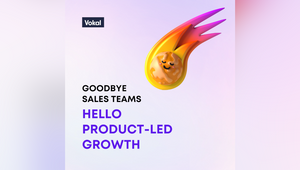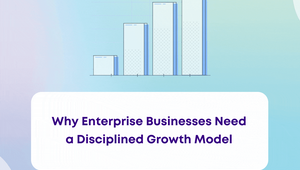
How User Data Analytics is Fuelling Digital Transformation

What’s better: More customers or happier customers?
The logical answer is, of course, happier customers. Because happier customers eventually lead to more customers, which kickstarts a great growth flywheel.
So why are most organisations still focused on digital customer acquisition and not customer satisfaction?
Whereas digital product and marketing teams once primarily invested in getting people to use their products in the first place, there has been a shift in priorities from driving customer acquisition to maintaining customer engagement and loyalty and increasing customer value.
Because the real answer to “What makes our customers happy?” lies within the deep analytics of the app those customers are interacting with.
We are witnessing a pretty big shift in the way companies are engaging with their customers, and the key is user data analytics (not to be confused with marketing analytics).
Here’s a great example from the Harvard Business Review of how user data analytics are being used in enterprises.
I highlighted the relevant parts that stood out to me.
User data analytics, which is similar to user journey analytics, reveals that the most engaged features in FordPass, such as remote start, vehicle locator, and FordPass Rewards, varies by cohort across its millions of active users.
Brand new customers do not necessarily adopt the most common features first but initially exhibit other usage behaviors that drive a higher propensity to return to the app.
By identifying the indicator of loyalty and retention for new users, the company can design its FordPass onboarding accordingly to help make sure that the right features are prominently displayed at the beginning of each new user’s customer journey.
There is a lot to unpack in these few paragraphs.
Let’s break it down.
User data analytics, which is similar to user journey analytics, reveals that the most engaged features in FordPass, such as remote start, vehicle locator, and FordPass Rewards, varies by cohort across its millions of active users.
Any person would have told you to put remote start and vehicle locator on the front of the app, but what they couldn’t tell you is that certain demographics don’t want that on the screen.
This opens the opportunity for personalization-based usage! +1 for happier customers.
Let’s look at the next passage.
Brand new customers do not necessarily adopt the most common features first but initially exhibit other usage behaviors that drive a higher propensity to return to the app.
Other usage behaviors that drive a higher propensity to return to the app! That’s a great insight. Now, instead of guessing, Ford knows exactly the features needed to get brand new customers to come back to the app.
+1 for personalization and happier customers. The Ford team saved themselves a lot of meetings with PowerPoints and conversations with executives guessing what the core features should be.
Let’s look at the last one.
By identifying the indicator of loyalty and retention for new users, the company can design its FordPass onboarding accordingly to help make sure that the right features are prominently displayed at the beginning of each new user’s customer journey.
Were they listening to me? I think they were. They now make sure the onboarding for each customer gets the right features, I’m guessing specific to their cohort!
The three most critical areas for long-term digital success have nothing to do with customer acquisition.
The devil is in the details, and most organizations are afraid of looking the devil in the eyes.
The three most important areas for long-term success revealed by an Amplitude survey are:
1. User engagement
2. Customer retention rate
3. Customer lifetime value
But, ok, I get it. Digital products have to acquire users to get growth started. It’s not like they can be ignored. I agree with that, and at Vokal, we do a lot of customer acquisition for our B2B and B2C customers.
But the core of our work, similar to the Ford example, is focused on cohorts.
Cohorts are a way to group people by a statistical factor like age or class membership. So you can have a cohort of people aged 18–24 years old, or a cohort of people that live in Indiana, or even a cohort of iOS vs. Android users.
Cohorts lead to a better understanding of how customers are using your products. And, as I alluded to at the beginning of this piece, do you want more customers or happier customers?
In fact, acquiring a new customer can be anywhere from five to 25 times more expensive than retaining an existing customer, explains Harvard Business Review contributing editor Amy Gallo in her article "The Value of Keeping the Right Customers."
Acquiring customers is expensive. Much more expensive than focusing on the “obvious” problem, which most companies think is customer acquisition.
Now what?
It’s unlikely that this article is going to kickstart your company’s transformation. There are a lot more factors than someone saying, “You need to become a digital-first organization!”
But I can recommend starting small with user data analytics. It doesn’t need to be a big project with multiple executive sign-offs. You can begin by picking a small sub-section of a digital service and analyzing it by cohort.
Maybe you’re trying to increase revenue per purchase. Or maybe you’re trying to get the user to come back to the app daily. Or maybe you want customers to stay on the app longer, and in some cases, shorter!
User data analytics is the foundation of digital transformation.
You heard it here first.
Reid Lappin is CEO of Vokal










